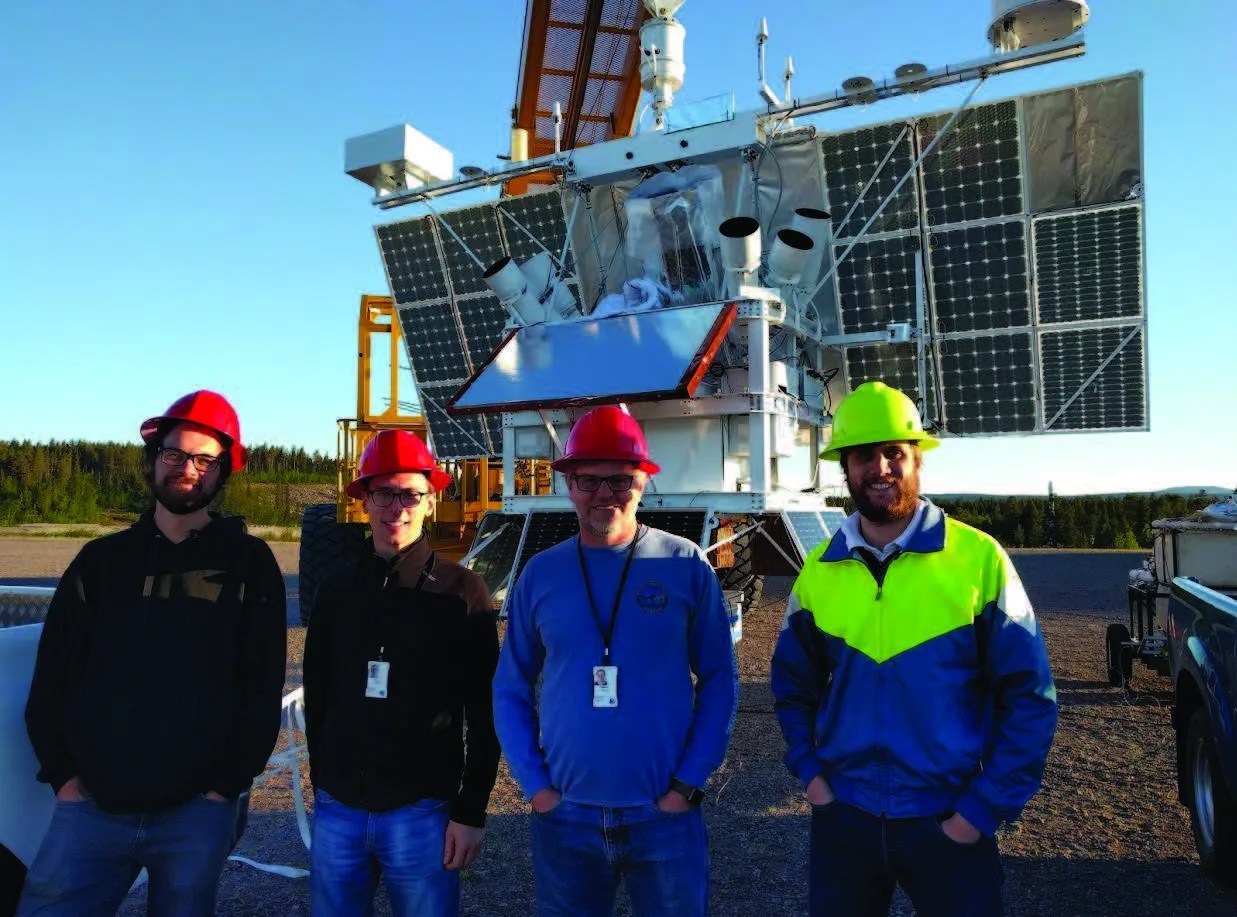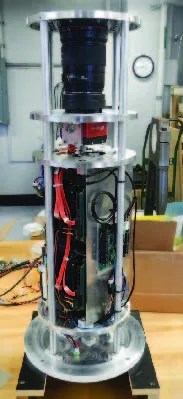This blog post originated in the 2018 Science Mission Directorate Science and Technology Report.
PROJECT
Polar Mesospheric Cloud Turbulence experiment (PMC Turbo)
KEY POINTS
The balloon-borne PMC Turbo experiment successfully provided information about small-scale instabilities and turbulence in the mesosphere that will ultimately contribute to improving weather and climate models.
The thin remote Polar Mesospheric Cloud (PMC) layer at an ~82-km altitude in the summer polar atmosphere is possibly the best place on Earth to study the sources and effects of turbulence in geophysical fluids – key small-scale processes that play major roles in weather and climate. Images from the balloon-borne PMC Turbulence experiment (PMC Turbo) are yielding insights into how gravity wave and turbulence processes transport and deposit energy and momentum throughout the atmosphere.
Comprised of seven PMC imagers and a Rayleigh lidar, PMC Turbo provided overlapping large and small imager fields-of-view and PMC altitudes and displacements, which are enabling analyses of events extending from gravity wave sources at scales as large as 100 km to the inner scale of turbulence at ~20 m. PMC Turbo was launched on July 8, 2018 from Esrange, Sweden and landed almost six days later in northern Canada after collecting over two million high-resolution PMC images.
PMC Turbo imagers in separate pressure vessels were configured to operate as an integrated system or autonomously as piggyback payloads and/or individual ground systems. Each pressure vessel contained a high-resolution camera, a computer control system, and 32 TB of data storage. Computer software allowed each system to coordinate the full imaging suite and manage flight control and communications. The PMC Turbo imagers, redundant flight control capabilities, and a dual-circuit power system provided major redundancies and ensured collection of significant PMC imaging even in the event of multiple subsystem failures, none of which occurred. The successful PMC Turbo payload development, integration, testing, and flight program was largely performed by the graduate students and research scientists pictured in the launch site photo below.
To augment the scientific benefits of PMC Turbo, the payload hosted the first Rayleigh lidar to fly successfully aboard a stratospheric balloon platform. The lidar measured the PMC backscatter profile and vertical displacements at the PMC layer, and quantified gravity wave temperature perturbations in the stratosphere below the PMC layer. The lidar was fabricated, integrated, and tested by a team at the German Aerospace Center (DLR). Lidar backscatter profiles and derived gravity wave temperature perturbations have provided valuable additions to PMC Turbo analyses to date.
Small-scale instabilities and turbulence account for deposition of energy and momentum transported throughout the atmosphere and other fluid systems by gravity waves. These dynamics play key roles in weather and climate but are poorly represented in weather and climate models at present. Despite the remote location and the challenges inherent to observing these phenomena, our observations will enable studies of the dynamics revealed in PMCs that can guide improvements in weather and climate models, which could yield significant societal benefits. The information provided by PMC Turbo could also enable more accurate modeling and increase our understanding of other fluid systems, such as those in oceans, lakes, other planetary atmospheres, and stellar interiors.
PMC Turbo was recovered in Canada with all key instruments and systems intact. The pressure vessels and lidar are ready for another flight. Given the results of analyses to date, the PMC Turbo team expects multiple, valuable studies to result. Analyses have also revealed how even more comprehensive and beneficial data could be obtained with additional instrumentation, an improved imaging configuration, and a flight at a higher latitude over Antarctica where PMCs are brighter and more continuous. The team is considering new instrument options to further expand the measurement capabilities and anticipates a new flight proposal at the next opportunity.
SPONSORING ORGANIZATIONS
Heliophysics Division’s H-TIDeS Program
PROJECT LEAD
Dave Fritts, GATS with Co-I Amber Miller, Columbia University


































